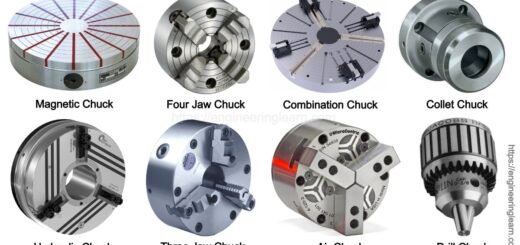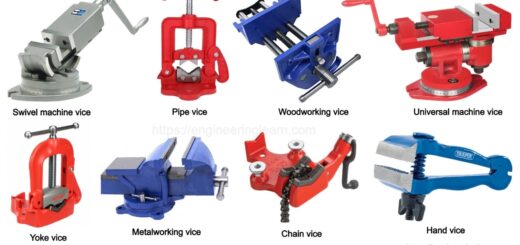13 Types of Shovel – Parts, Uses, Advantages & Disadvantages [with Pictures & Names]
![13 Types of Shovel - Parts, Uses, Advantages & Disadvantages [with Pictures & Names]](https://engineeringlearn.com/wp-content/uploads/2022/05/Shovel-1024x539.jpg)
Introduction
Types of Shovel – Parts, Uses, Advantages & Disadvantages [with Pictures & Names] :- There are so many different types of shovels available that picking the appropriate one for the job might be the difference between a lengthy day of hard work and a simple and straightforward chore. Shovels are essential garden tools, with some being intended exclusively for a single task and others being versatile workhorses that can be used for a variety of tasks. In order to comprehend various varieties of shovels in a systematic way, it is very important to first learn the detailed anatomy of a shovel.
Parts of Shovel
1. Grip
The grasp of a digging tool is observed having the highest part, which is found being attached to the shaft. It can appear as a wooden, plastic, or metal handle, yet frequently there might be no handle by any stretch of the imagination, and you can utilize the digging tool by clutching the top piece of the shaft.
A D-molded handle is normal among more limited digging tools and digging scoops, which help to increment grasp.
2. Shaft
The shaft of a shovel is observed having the largest pole shaped portion that is found having a highly utilised order in order to provide the leverage whenever any operation is taking place. Typically, they are composed of wood, fibreglass, or metal.
The length of a shovel shaft varies, and the height of your shovel should be adjusted to your height to make it comfortable to use.
3. Kickplate
A shovel’s kickplate is referred to as a step which seems to be quite important for knowing that not all shovels are found having a kickplate amongst them. It is referred to as one of the topmost edge of the blade wherever you can insert your foot in order to provide the pressure which is required. Kickplates are commonly known for having the digging shovels on which are responsible for allowing the user’s extra weight to be used to dig deeper into the earth.
The excess usage of kickplate helps in the improvement of the results and also makes the job easier for the user as they are found digging by the help of using their weight instead of just their arm and back muscles.
4. Collar
The neckline of a digging tool is where the sharp edge meets the shaft. It’s vital that the collar is secure and solid; if not, it might disintegrate or snap during weighty work. The collar normally associates with the shaft and handle part of the digging tool with a bolt or screw, and can be disengaged assuming you really want to supplant either end.
A cutting edge is generally referred to as the one which is found having a significant life expectancy as compared to the shaft as well as the handle, so both of these parts are found being breaking which can be purchased by the substitutions and then can be connected to them using the old edge at the collar.
5. Blade
A blade is referred to as that device which seems to be typically made of metal or aluminum, however in certain occasions may be fiberglass or plastic. Scoop cutting edges arrive in a wide scope of shapes and sizes, and ostensibly the plan of the sharp edge has the most effect between various digging tool types.
6. Tip
It is important to note that the lowest edge of the blade, furthest from the shaft, is the tip of a shovel. For scooping or moving, flat tips are excellent, whereas pointy and rounded tips are best for cutting and digging.
Types of Shovel
1. Edging Shovel: ( Types of Shovel )
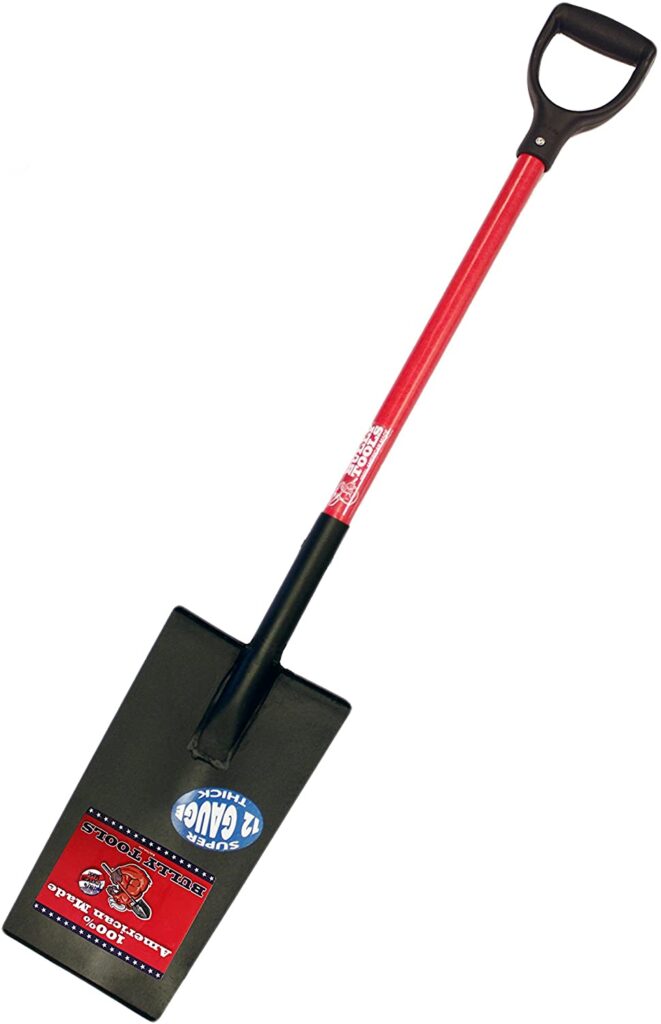
This digging tool is explicitly intended to make flawless edges around yards or lines, making a clean authoritative advantage. It has a long shaft, with a little estimated metal semi-circle appended at the base, and a straight footplate where you can apply strain with your feet. The cutting edge is generally sharp and level, as it ought to be squeezed straightforwardly straight down into the grass or soil. The cutting edge is very shallow, as it doesn’t have to make profound slices to be successful.
Because of their thin blades, these shovels are suitable for usage in tight spaces where precision is required to avoid hurting neighbouring plants.
2. Flat Shovel: ( Types of Shovel )
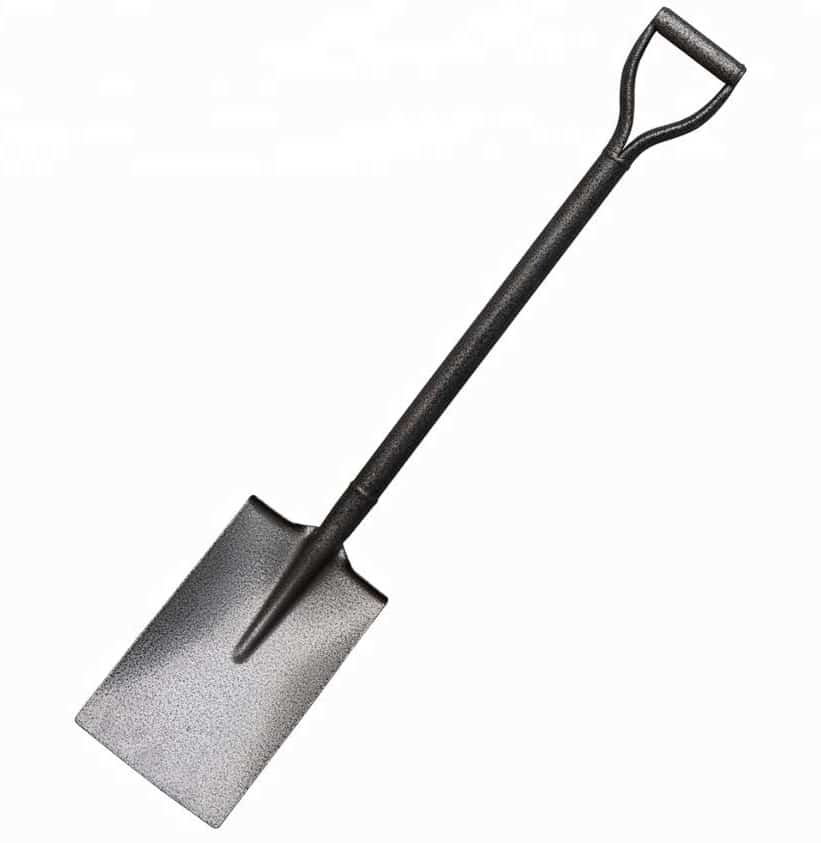
As the name tells us, level digging tools have a level edge. Any digging tool with a level edge is principally intended for scooping, and they frequently have a marginally sunken sharp edge, similar to a made right spoon, that improves them at conveying materials. They are valuable for moving nursery materials around, like soil, mulch, or rock, and are great for stacking push carts or other nursery holders. The level edge implies they are not extraordinary at digging, but rather they have an enormous footplate that will assist you with adding strain to compel the cutting edge into the ground.
This is useful for shallow digging activities like edging and trench cleaning. It will function best with soft soils if you want to utilise it for this purpose. A flat shovel is referred to the one which is mostly used for the purpose of scooping, spreading, and transporting, but it’s a versatile garden tool that may be used for a variety of tasks.
3. Trench Shovel: ( Types of Shovel )
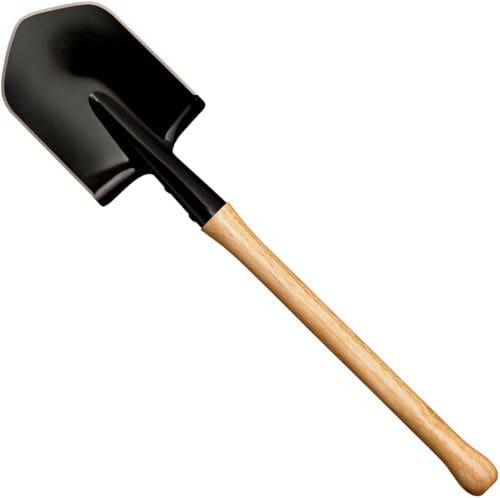
Otherwise called a trench scoop, the digging scoop has two essential purposes. Right off the bat, it can dig shallow channels, and also, it can tidy out and neaten up more profound channels that have been made by an all the more amazing asset. Channel scoops have a long and slender cutting edge with a sharp tip, and the edge is set at a point.
Because the blade is so small, there isn’t much room on the footplate to drive the shovel into the ground with your weight, so you’ll have to rely on arm strength instead. This gives an idea that while excavating anything deeply there is a shallow trench that need to be extremely difficult and time-consuming. Landscape gardeners are the most common users of trench shovels.
4. Tree-Planting Shovel: ( Types of Shovel )
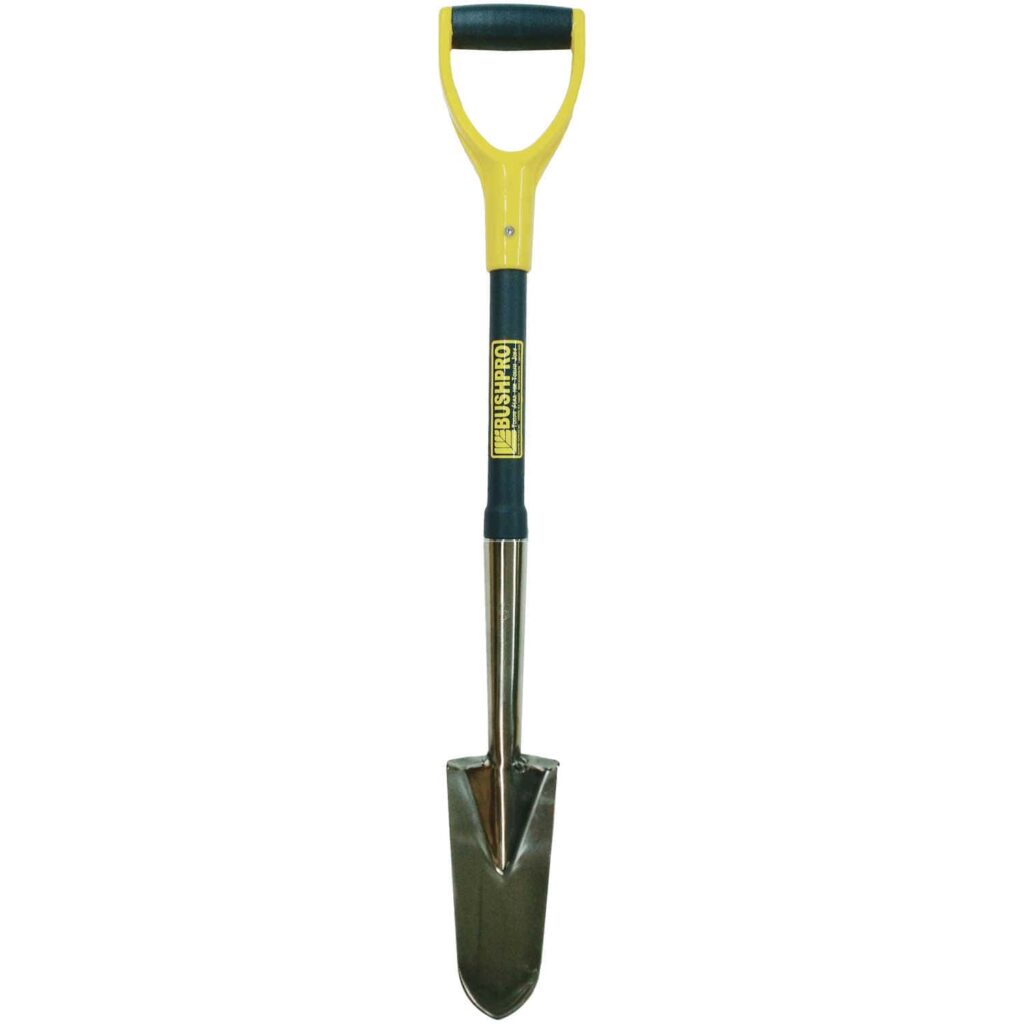
These digging tools are explicitly intended for establishing trees, taking care of a task that would take significantly longer with different kinds of digging tools. A tree-establishing scoop has a thin cutting edge that comes to either a bended or pointed tip. The tight sharp edge implies it can dig different measured openings, by working the digging tool into the ground in a roundabout shape.
The shaft can differ in size contingent upon what you really want for your undertaking, with longer shafts being better for level and even ground and more limited shafts working better on slopes or slanted ground. These digging tools can be utilized to uncover a tree for relocating, or making another opening to establish a tree. The digging tools are found being shaped as a comparative shape in order to redesign as a digging scoop. This is responsible for causing a bend over in order to make shallow channels wherever a long channel for a blossom bed seems ok as compared to the ones making bunches of little plant openings. It can likewise be utilized to wipe out rocks or flotsam and jetsam from greater channels.
5. Power Shovel: ( Types of Shovel )
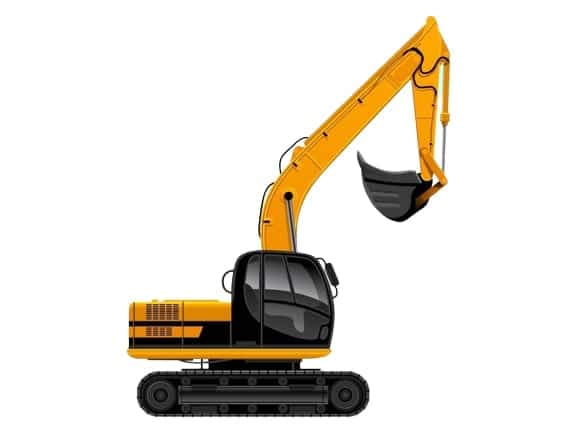
There are two unique devices that go by the name of force scoop. These are found having cutting edges that can be turned in order to fetch the scattered snow, permitting you to make a snowed-under way or carport effortlessly. These are considerably more effective than a standard snow scoop, yet as you would expect, accompany a fundamentally greater cost tag. They are a more modest and lighter option in contrast to the conventional snow blower.
A jackhammer with a shovel attachment is the second type of power shovel. They’re especially useful because they’re small enough to work in tight spaces where larger machines can’t.
6. Post Hole Shovel: ( Types of Shovel )
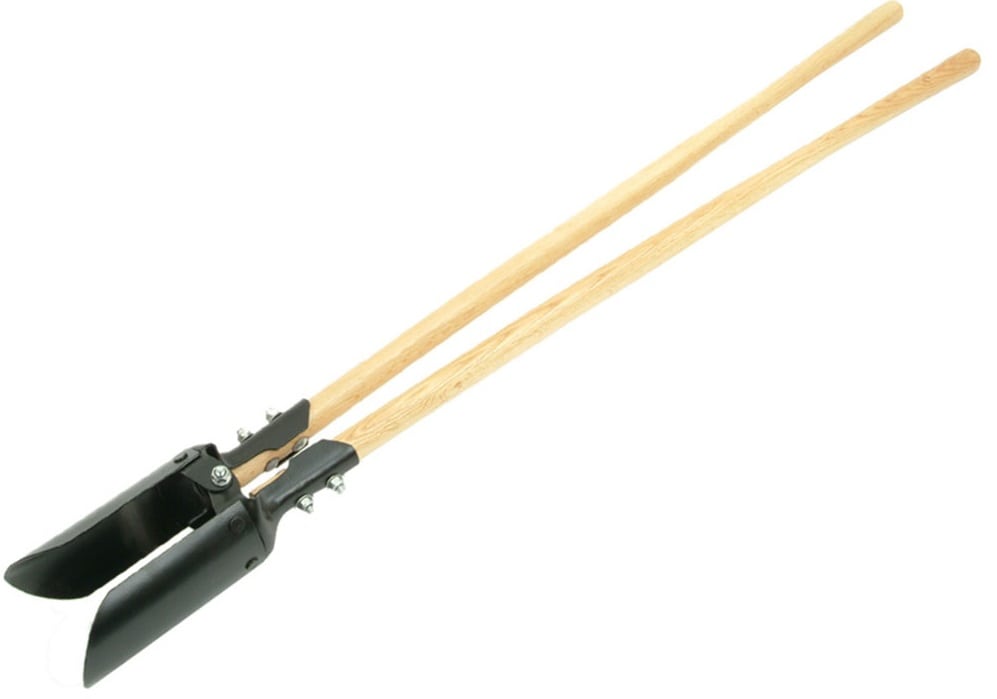
It is made from two digging instruments associated together, when in doubt, with long and thin inside twisting sharp edges that have twisted tips. The condition of the sharp edges helps the digging instrument with slicing through any roots or anything which might hinder them. Right when closed together, the forefronts make a round and empty shape. A post opening digging apparatus is used basically to dig significant openings for fence presents on be installed into.
They achieve this by quickly burrowing, squeezing, and lifting a cylinder of soil from the ground. If you have a lot of post holes to dig, a post hole shovel is a wise purchase. It takes a fraction of the time and produces considerably neater holes than digging holes with a digging shovel, resulting in a clean and professional-looking finish.
7. Handheld Shovel: ( Types of Shovel )
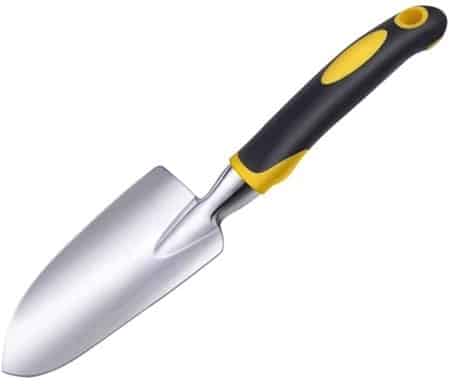
These digging instruments go by a variety of names, including garden scoop, garden scoop, hand scoop, hand scoop, and nursery spade (but calling this a spade would be off-base). These are fundamentally more modest than anticipated scoops with short shafts of commonly around six creeps in length, which can be used for a variety of nursery tasks, including revealing weeds, disposing of plants, and digging openings for new plants. The arrangement of these devices can contrast, but for the most part, they all have a really confined changed or pointed edge, which normally measures around four slithers across. The front line of a handheld digging apparatus is ordinarily curved, making for better scooping.
8. Root Shovel: ( Types of Shovel )

Root shovels are referred to as the ones which are found coming in a variety of shapes as well as sizes, but they all have elongated triangular blades. The tip of these blades can come to a point or be chopped off to give a flattened tip. The edges of the blade are found being used frequently which aids in sawing through the established plant roots. These shovels are made to aid in the removal of plants and trees, whether for transplanting or disposal. Their blades are found being useful for the purpose of cutting through tough which is established as the roots of old trees. These are referred to as those which are found being removed in order to allow more space for the new roots that can be generated and after that can be spread. These shovels are found having their application in order to create holes for new trees or plants to be settled into
9. Snow Shovel: ( Types of Shovel )
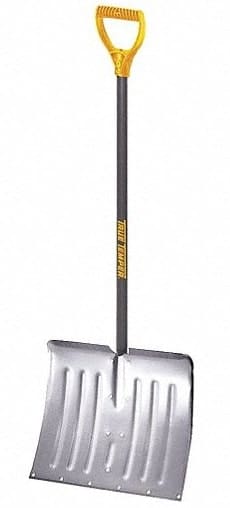
A snow shovel is an essential tool to have in your garage if you live in an area where snowfall is often. These shovels are the ones which are found having a very lengthy shafts that are found being made of a variety of materials, including wood, metal, and plastic. The blade is rectangular in shape and vertically bent. This design allows you to scoop snow from the pavement or front steps and toss it into the yard or anyplace else you want. Metal grooves or ridges around the blade tip of some snow shovels help remove snow and can also be used to chip away at ice.
Snow scoops arrive in an assortment of material choices, with cutting edges being plastic or metal, and cutting edges differ ridiculously in size. An enormous cutting edge with a sharp edge and a profound bend will scoop the snow most actually and proficiently. In case you are planning to have a huge region to scoop the snow from, or on the other hand on the off chance that snow scooping is an assignment you need to finish frequently, you might need to put resources into an ergonomic snow scoop.
10. Scoop Shovel: ( Types of Shovel )
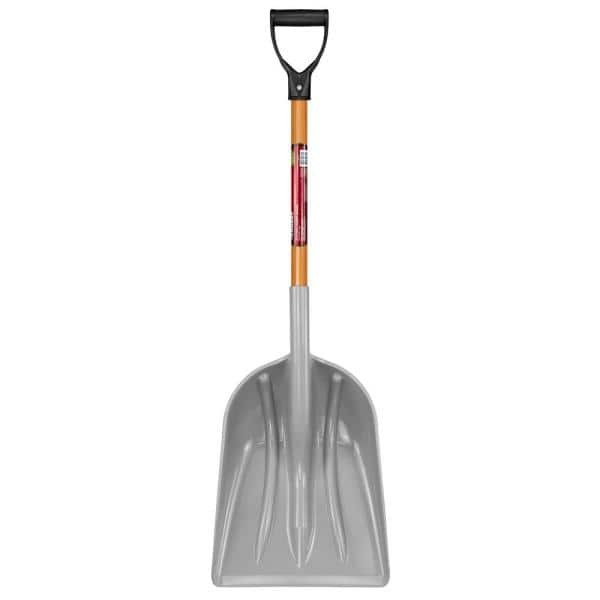
A scoop shovel has a significantly larger blade than ordinary shovels, but with a slightly shorter shaft and handle, the overall height is the same. The tip of the blade is normally flat, but it can sometimes be rounded. Scoop shovels are found having a feature which has a scooped form accompanied with a strong side edge that can help in keeping any material that you are particularly moving in for. They’re great for moving big volumes of dirt, gravel, wood chips, and garbage.
They can be developed of different materials, with aluminum scoop scoops having a more limited life expectancy than stronger metal scoop scoops. The material that is being scooped must be looked upon along with which the amount to move prior for the purpose of purchasing your scoop. However the aluminum scoops won’t keep going as lengthy, they are lighter, which could make moving a great deal of material a considerably less demanding undertaking.
11. Pointed Digger Shovel: ( Types of Shovel )
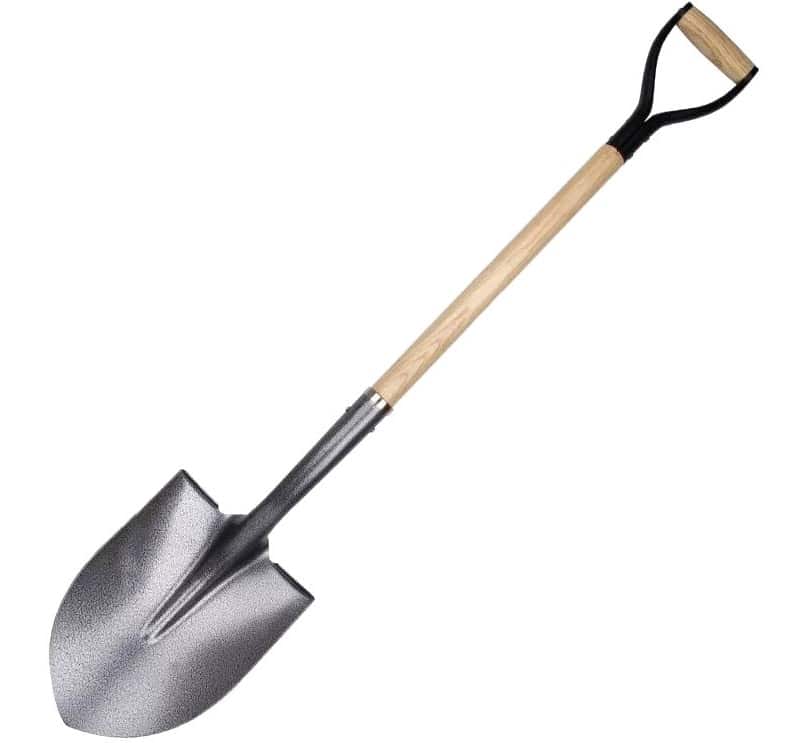
A pointed digger shovel is referred to as that shovel which is found being required for the purpose of digging through heavy, compacted soils or even rocky soils. This shovel’s blade will have a sharp point and the edges will curve upwards slightly. Both of these traits result in a tool that can dig as well as hold on to the material dug up. These shovels have a long wooden or metal shaft and a large footplate. With the footplate, you can dig deeper and denser soil than with regular shovels.
12. Folding Shovel: ( Types of Shovel )
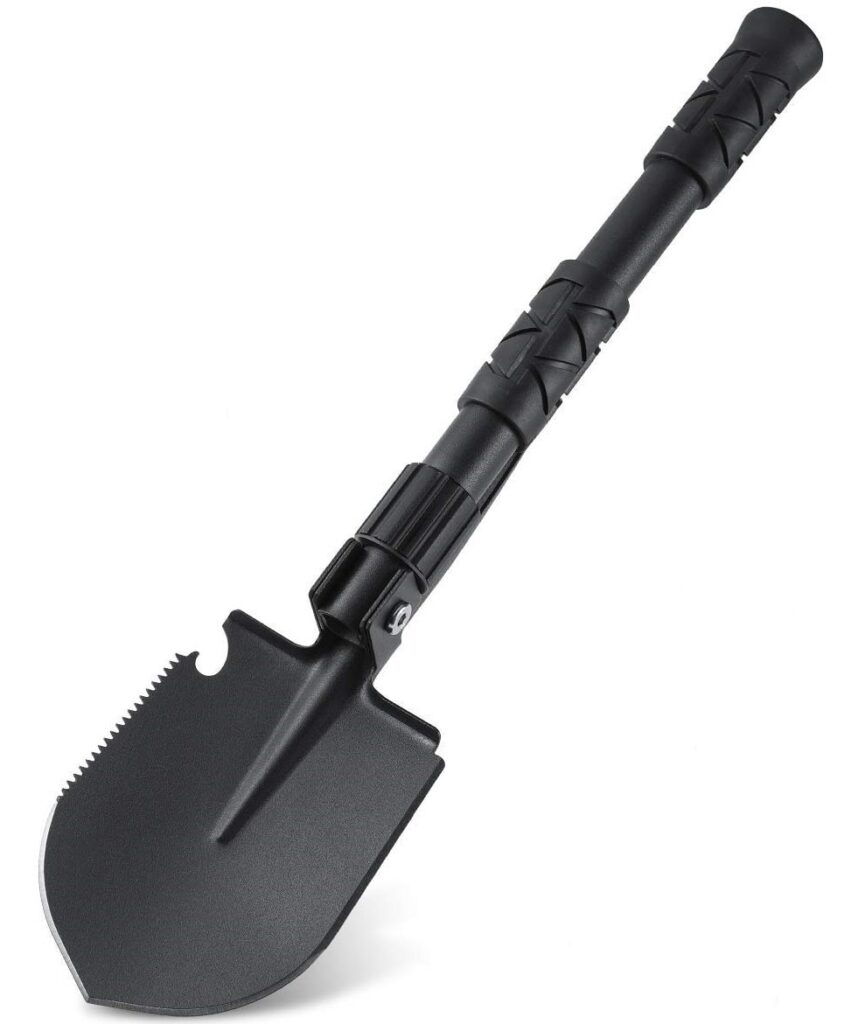
These little shovels fold in half to make them easier to transport. They’re great for camping vacations and other outdoor activities when space is restricted, and it’s also a good idea to keep one in the trunk of your car in case of an emergency. Folding shovels that are cheap have a short lifespan and are easily broken or snapped. Invest in an all-steel design for longevity, as these are more ideal for heavy-duty use.
13. Round Digger Shovel: ( Types of Shovel )
A round digger scoop is best used for digging openings in gentler soil types. It has an edge with bended edges like a sharp digger scoop, however the tip has a bended shape. It is great for digging openings for new plants or trees, or for relocating bedding plants. In any case, on the off chance that you have weighty mud, rough, or extreme soil, a round digger digging tool might battle to give you the outcomes you need, and a sharp digger digging tool would be more suitable.
Tips For Buying Shovel
Assuming you’re searching for another digging tool, require a moment to contemplate these contemplations prior to settling on your decision.
a) Intended Use
Be that as it may, in the event that you’re genuinely unpracticed in cultivating and will not be investing an excessive amount of energy working in your hard, then, at that point, you’ll be in an ideal situation purchasing only one great quality digging scoop. On the off chance that you purchase right, a digging tool will last you numerous years, perhaps many years, and can be utilized for a huge number of nursery occupations, including digging, weeding, digging, and moving soil.
b) Blade Shape
The type of soil you have will determine the form of the blade you want for your shovel, so be sure you know what you’re working with before making a purchase. Flat-edged shovels are ideal for working with loose soils, scooping, and edging. Round blades are referred to as the ones which are found working best in mostly all the softer, younger soils, whereas pointed shovels work best in hard, compacted soils.
c) Size and Weight
In general the upper back or the shoulder torment is found being the most working tool. If you are willing to seek information on the ideal level of a digging tool, then you must know that it is around four inches from the bottom of your shoulder when it is stood upright. The weight is additionally a significant thought, as a weighty digging tool will wear you out rapidly, while a light digging tool won’t be as strong.
This is why some people have many shovels for different jobs, allowing them to tailor the sort of shovel they use to the task at hand. If you want to move a lot of material with your shovel, such as a large pile of stone pebbles, a lightweight shovel will be preferable so you can move the stones without being weary. A heavier shovel will be better for digging because it will be more durable and able to take the pressure that comes with excavating land.
d) Construction Material
The development material of a digging tool is an essential thought while picking which digging tool to purchase, and the material you need will rely upon your prerequisites. In the event that the entire digging tool is produced using one strong material, it won’t rage at the collar point (as this is the most fragile place). Assuming your digging tool will be utilized for lighter work, for example, scooping and moving soil, then, at that point, aluminum might be a decent decision as it weighs less yet is generally durable.
Numerous top notch scoops are presently produced using titanium, which has the advantage of being lightweight yet additionally especially tough, much more so than steel. Titanium is likewise impervious to rust and won’t erode, bringing about an enduring digging tool. Titanium scoops truly do accompany a major sticker price, which may be obnoxious to many individuals, however assuming you’re searching for a solid digging tool that will be with you. On a shovel, look at the material of the collar as well as how the handle and blade are linked to the shaft. A bolt will survive the longest, however a screw joint or press-in connection will normally not last more than a year.
